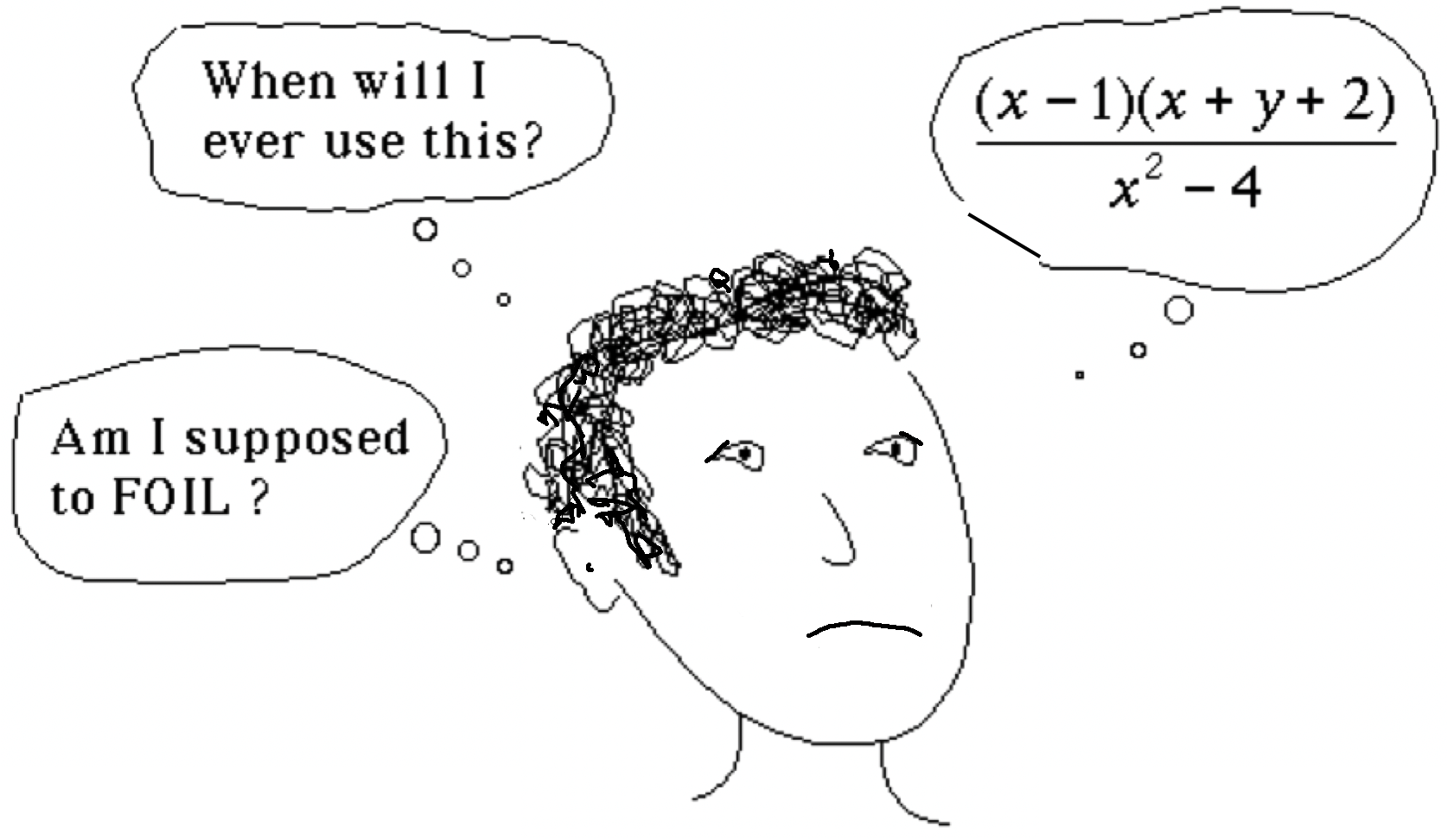The problem in Algebra 2: too many topics, too many formulas that mean too little to most students.

I propose a partial solution: teach fewer topics, in more depth, to inject meaning into the course; provide access to all students through carefully selected tools, and still try to challenge the strongest students.
Blog post: In Defense of Algebra 2
Available on this site:
Parabolas and Quadratics — Links to many lessons and activities: hands-on introduction using manipulatives (factoring and completing the square), interesting work involving symbol manipulation, three paths to the quadratic formula, and more!
Sequences and Series: links to much material on this topic, plus a ten-minute slide show on the place of formulas when teaching for understanding.
`n^(th)` Power Variation (`y=kx^n`) | Teachers' Guide
Exponential Functions: using dice, analysis of graphs, and more.
Introduction to logarithms: Super-Scientific Notation
Animation to explain the sine curve.
Introduction to linear programming: Letters and Postcards. This is a concrete approach, and ends with a discussion-provoking applet.
Iterating Linear Functions from The Mathematics Teacher (with Jonathan Choate), and Algebra: Themes, Tools, Concepts (with Anita Wah). This works well prior to work on sequences and series. Also there: links to GeoGebra applets, and a bit on iterating non-linear functions and chaos.
Geometry of the Ellipse (worksheet)
Perspective (lab on inverse variation, similar triangles review.)
Complex numbers (worksheets and games)
An effective introduction to matrices, based on geometric transformations and complex numbers.
Presentation
Naoko Akiyama and Scott Nelson had designed a one-hour presentation based on the Math 3 curriculum which we've all taught, and which was largely developed by me at the Urban School of San Francisco. I later joined them to expand the presentation into a 3-hour minicourse, which we presented at the California Math Council, Southern Section (Palm Springs, November 2001) and National Council of Teachers of Mathematics (San Antonio, April 2003.) I updated it in 2011 to present at an NCTM summer institute.
Download the slides or view a short version on line. Corresponding handout (3.6 MB).